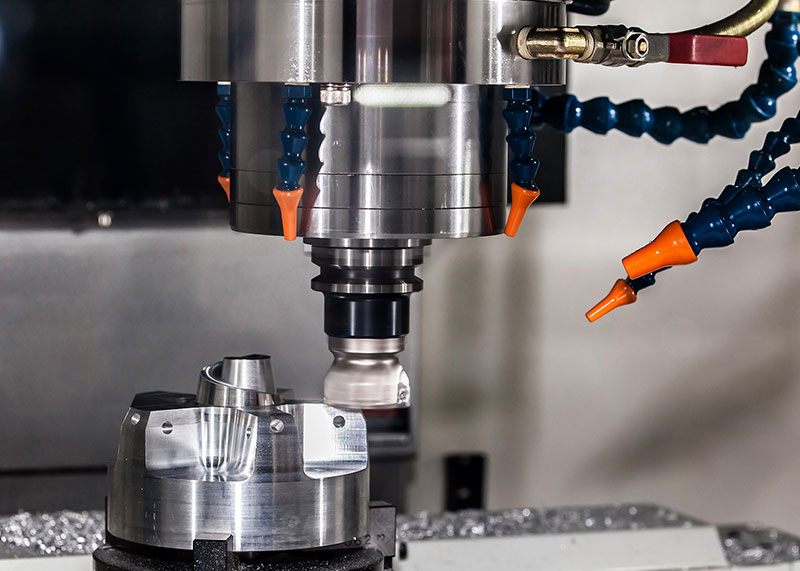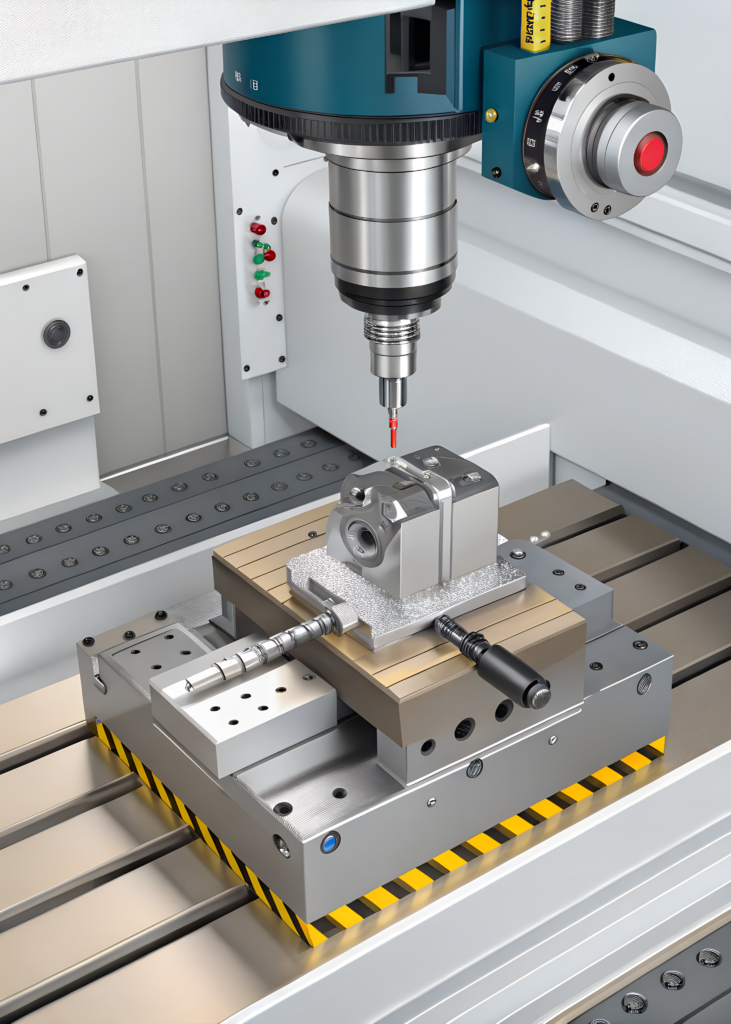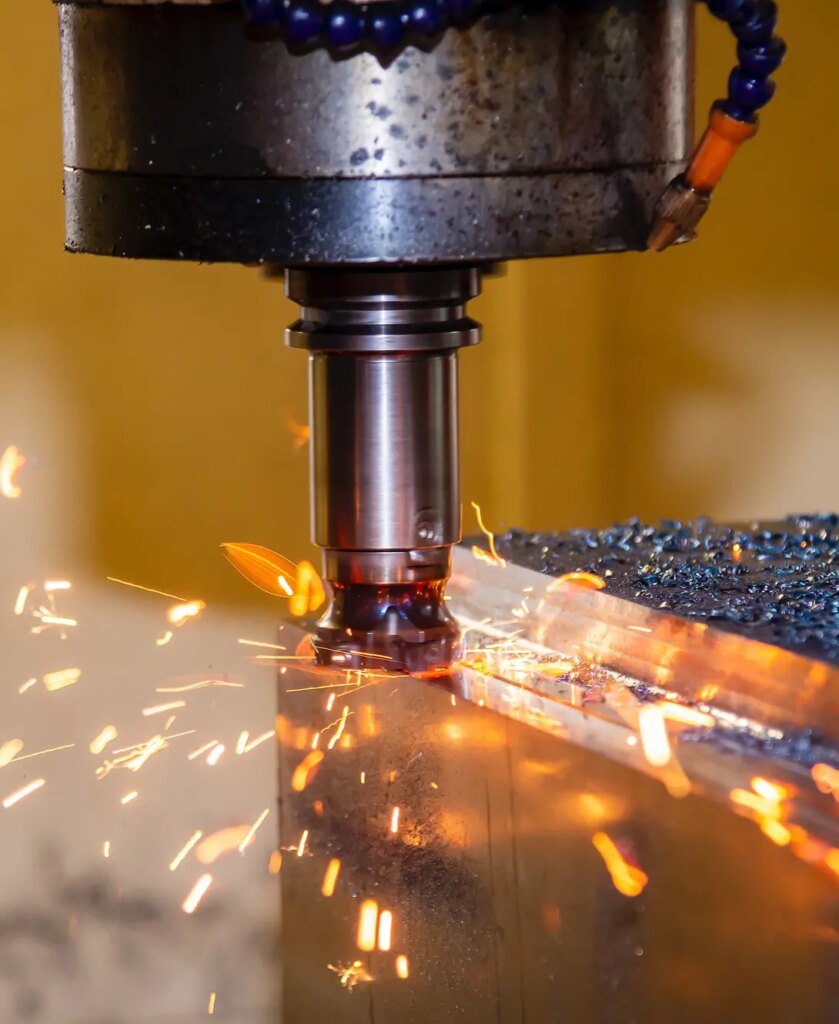How CNC Milling Works
CNC milling begins with a digital design created using CAD (Computer-Aided Design) software, which is then converted into machine-readable G-code using CAM (Computer-Aided Manufacturing) software. A machinist sets up the CNC mill by loading the workpiece and selecting the appropriate cutting tools. The machine then follows the programmed instructions to shape the material by moving the cutting tool along defined paths. After machining, finishing processes such as deburring, polishing, or coating may be applied to complete the part.


Key components of a CNC Milling Machine
A CNC mill consists of several key components: the worktable, where the material is mounted; the spindle, which rotates the cutting tool; and cutting tools such as end mills, face mills, and drills, selected based on the specific task. The axes determine the machine’s range of motion—commonly 3-axis (X, Y, Z), 4-axis (adds rotation), and 5-axis (adds tilt for complex movement). Finally, the controller is the computer system that interprets G-code and directs the machine’s operations.
Types of CNC Milling Machines
Vertical Milling Machines: The spindle is vertical; ideal for face milling, slotting, and drilling.
Horizontal Milling Machines: The spindle is horizontal; better for heavy-duty tasks.
Multi-Axis Machines: Allow simultaneous movement along 4 or 5 axes, enabling the creation of highly complex geometries.
Materials Commonly Used
CNC milling can work with a wide range of materials, including:
Metals: Aluminum, steel, brass, titanium
Plastics: ABS, nylon, polycarbonate
Composites: Carbon fiber, fiberglass
Wood: Used in custom or artistic applications
Advantages of CNC Milling
Precision: Tolerances as tight as ±0.001 inches.
Repeatability: Perfect for high-volume production.
Flexibility: Can create complex shapes and features.
Speed: Fast turnaround times for both prototyping and production.
Automation: Reduced need for manual labor and fewer errors.

